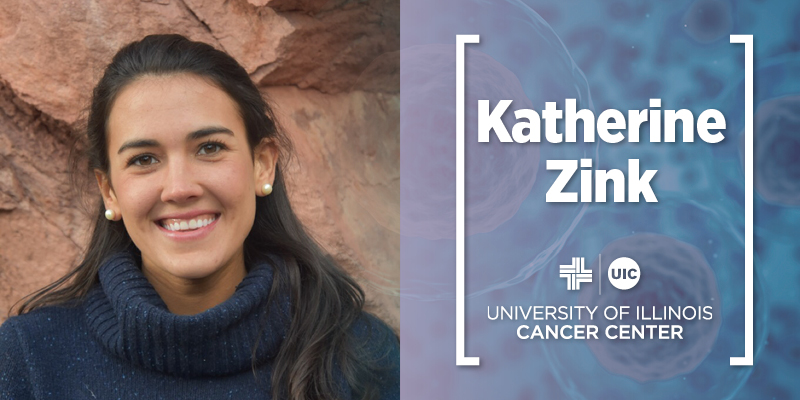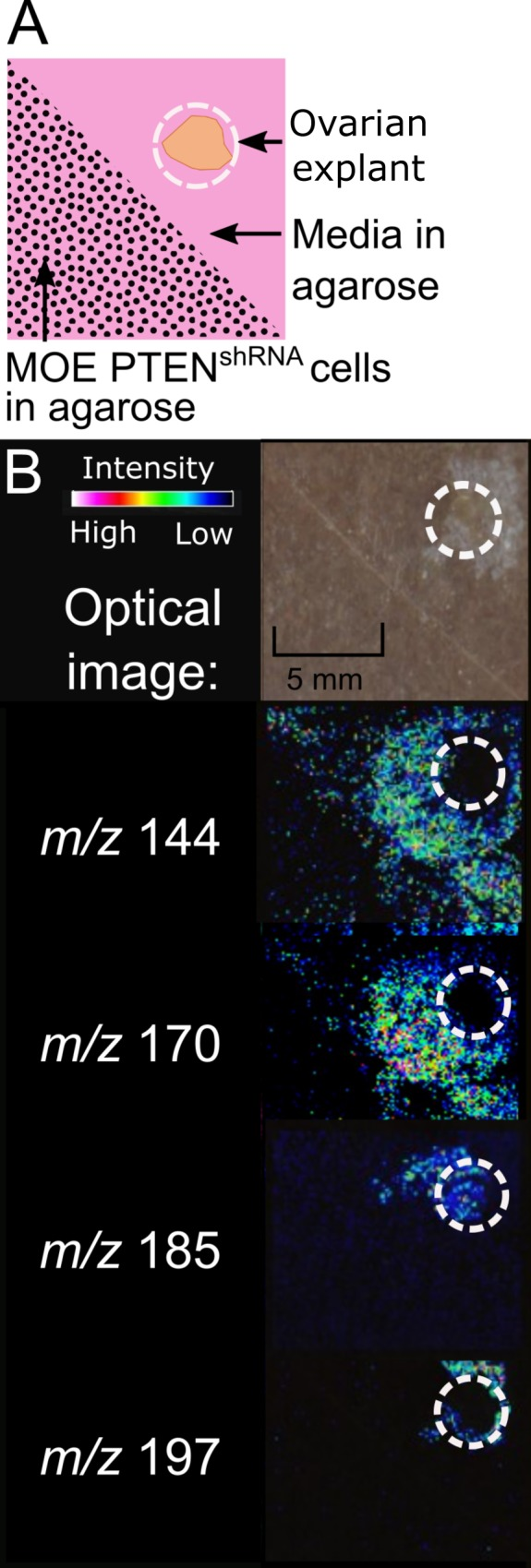
A pandemic has not stopped University of Illinois at Chicago graduate student Katherine Zink from trying to find a cure for ovarian cancer, or from simultaneously earning a doctorate degree in natural products chemistry.
The recipient of the Ruth L. Kirschstein Predoctoral Individual National Research Service Award from the National Institutes of Health (NIH), Zink was forced to physically distance herself from the laboratory of her mentor, Laura Sanchez, for nearly three months due to COVID-19. But with her one-year grant scheduled to expire in August 2020, she was not going to sit idly at home.
A great deal of experiments are conducted in Sanchez’ laboratory, and the worldwide pandemic was difficult for Zink and her colleagues, as the doors were shuttered. For Zink, the timing was fortuitous, as she was nearing her May 5, 2020, graduation date, and she needed time away to complete writing her dissertation and prepare for her defense. The researchers eventually adapted, developing a system where they could utilize the lab strictly for essential experiments, with minimal people inside at any one time, and performing tasks as quickly as possible.
“Because my research on ovarian cancer requires organ tissue from mice, which were maintained during the pandemic, we prioritized a couple of experiments when those tissues were available,” Zink said.
Zink uses imaging mass spectrometry to visualize molecules and discover their specific location in a biological system. Her grant investigates how primary metastasis of ovarian cancer begins, and to do so, a new sample preparation platform to study how the two organ structures communicate with one another was developed.
“This is an important research question because most cases of high grade serous ovarian cancer, which is the most deadly subtype of ovarian cancer, begin in the fallopian tube and migrate to the ovary,” Zink said.
To mimic this environment, Zink dissected a mouse ovary and placed it into a small chamber on a glass slide that she studied using imaging mass spectrometry. The ovary is then surrounded with tumorigenic fallopian tube cells in agarose, a polysaccharide generally extracted from certain red seaweed that separates nucleic acids. This is done, Zink said, so the cells don’t move, but molecules that are used for signaling or communication can diffuse through the agarose.

“Using this new method, we have discovered that norepinephrine, known most commonly for its role as a neurotransmitter, is being released by the ovary in a very high abundance when it is surrounded by tumor cells, but not when it is surrounded by healthy cells,” Zink said. “Norepinephrine in a system increases the adhesive and invasive features of fallopian tube cells, so we believe that it is making an easier environment for the tumor to adhere to.
“We are currently working on identifying the signal that is coming from the fallopian tube, as we believe these two cell types are communicating with one another to generate an environment for primary metastasis to occur.”
High-grade serous ovarian cancer (HGSOC) is the leading and most lethal gynecological malignancy, Zink said. Currently, there are limited options for detecting the disease in its early stages and there are no routine tests that can effectively discriminate samples of healthy women from those with HGSOC.
Sanchez, PhD, a member of the University of Illinois Cancer Center’s Cancer Biology Program and assistant professor of pharmaceutical sciences, matriculated to UIC in 2015, and Zink was one of the first students to work in her lab when it began in 2016. The group’s early discovery that norepinephrine is released from the ovary was well supported by literature that already stated that women who were taking beta blockers (which block the receptors from recognizing norepinephrine) lived 60 months longer after being diagnosed with ovarian cancer than women who were not taking beta blockers.
“These types of serendipitous discoveries could really filter back into avenues for treatment, if patients are eligible,” Zink said. “While most of our research is not translational, eventually we may be able to discover a biomarker or engineer a therapy that could prevent primary metastasis of high grade serous ovarian cancer.”
Not only did Zink complete her doctoral dissertation and successfully defend her Ph.D. in pharmacognosy during the pandemic, she continued to perform literature reviews and write several manuscripts she will submit for publication. Since mass spectrometry uses large data sets, the pandemic also allowed Zink and her colleagues to re-analyze a great deal of existing information that was culled from numerous experiments.
“As part of Katherine’s dissertation, we asked her to propose the next set of mass to charge ratios that she would recommend for her replacement to elucidate, which required her to review and collate significant and biological replicates across all the datasets she had gathered,” Sanchez said. “I believe this will be valuable to the continuation of the project.”
Zink is readying herself to leave UIC and begin the next phase of her career. She is currently interviewing for jobs and hopes to remain in the field of natural products. The final year of her collegiate career is not one she will soon forget.
“Because of the pandemic, anyone who defended their dissertation during that time was not able to share their work in-person or attend their graduation ceremony,” she said. “It was very difficult to have achieved something that took five years to accomplish and not be able to share that moment with family and friends that you wanted to thank. But we were able to adapt the presentations to virtual meetings.
“Many people have gone through much more difficult challenges recently, so I am grateful about being in the position that I am in.”
